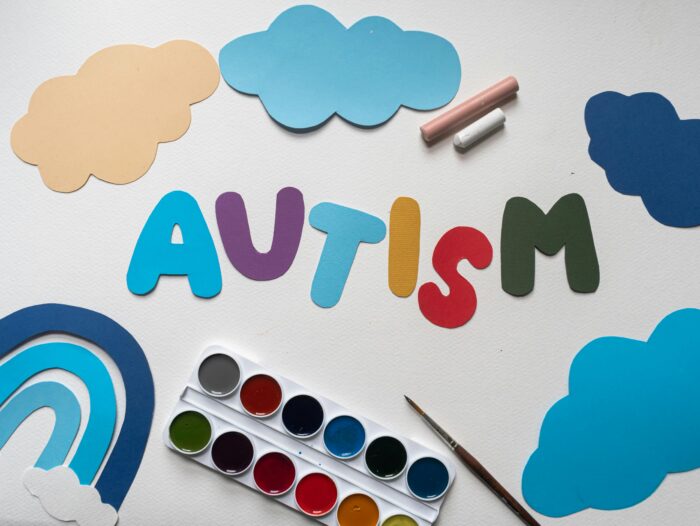The Influence of Early Treatment on Children with Autism: What Moms And Dads Need to Know
Sustaining Individuals With Autism: Finest Practices in Education And Learning and Addition
The support of individuals with autism within academic setups demands a nuanced understanding of best practices that promote addition and reliable learning. Emphasizing structured environments, tailored training approaches, and joint efforts among family members and educators can dramatically improve the academic experience for trainees on the spectrum. The difficulty exists not only in applying these practices yet additionally in cultivating a society of approval and understanding amongst peers. Exploring the complexities of these techniques exposes essential parts that can change academic landscapes and enhance outcomes for all trainees. What are the essential aspects that make these methods successful?
Comprehending Autism Spectrum Problem
Autism Spectrum Disorder (ASD) is a complex neurodevelopmental problem defined by an array of difficulties in social interaction, communication, and behavior. autism. People with ASD might show a range of signs and symptoms and characteristics, frequently bring about a distinct profile of staminas and difficulties. The range nature of the disorder implies that signs and symptoms can differ substantially in severity, with some people calling for substantial assistance while others may operate independently
ASD commonly manifests in very early childhood, with indicators frequently evident by the age of 2 or 3. Common attributes include problems in recognizing social cues, difficulties in taking part in mutual discussions, and a preference for routines or repeated habits. Sensory sensitivities are likewise widespread, influencing how individuals process and respond to sensory input from their setting.
Understanding these qualities is necessary for cultivating reliable support methods. Exact acknowledgment of ASD signs and symptoms can bring about timely treatments that can dramatically enhance an individual's lifestyle. Moreover, acknowledging the varied means in which the problem shows up aids specialists, instructors, and caretakers customize their techniques to fulfill the unique demands of each person on the autism spectrum.
Creating Inclusive Knowing Environments
Creating a comprehensive learning atmosphere is important for sustaining individuals with Autism Spectrum Disorder and advertising their social and scholastic success. Such environments focus on acceptance, understanding, and collaboration amongst all pupils, fostering a feeling of belonging. This strategy requires the active involvement of moms and dads, peers, and teachers, producing a community that values variety and inclusivity.
To achieve inclusivity, physical classroom setups ought to fit different sensory requirements, giving quiet locations and flexible seating alternatives. Visual supports, such as timetables and cue cards, can help understanding and predictability, important for lots of students with autism. Additionally, carrying out clear expectations and organized regimens helps in reducing anxiousness and enhances learning chances.
Cooperation among staff is important. Educators must participate in continuous expert growth to much better recognize autism and its ramifications for learning. Creating partnerships with specialized professionals, such as speech therapists and physical therapists, can even more improve the support offered to students.
Inevitably, cultivating a comprehensive understanding setting not just benefits trainees with autism yet improves the instructional experience for all students, promoting empathy, respect, and a deeper understanding of individual distinctions. This cumulative effort is necessary for growing a encouraging and appealing instructional ambience.
Effective Educating Methods
To efficiently sustain individuals with Autism Spectrum Disorder in the class, educators have to employ a selection of training methods that accommodate the special knowing designs and needs of these pupils. One reliable approach is the usage of click here to find out more visual help, such as graphes, photographs, and layouts, which can improve understanding and retention of information. These devices aid make clear complex ideas and provide a recommendation factor for students.
Furthermore, implementing structured regimens and clear assumptions can create a feeling of security and predictability, which is critical for many individuals with autism. It is additionally useful to incorporate hands-on knowing opportunities, as these experiences can promote interaction and practical application of abilities.
Set apart instruction ought to be a foundation of training approaches, allowing teachers to tailor lessons to private staminas and obstacles. Moreover, using click here for more social stories can help in creating social abilities and recognizing social signs, bridging communication gaps.
Finally, normal responses and favorable support can inspire trainees and strengthen desired actions. By incorporating these approaches, teachers can produce a effective and comprehensive understanding environment that supports the growth and growth of trainees with Autism Spectrum Disorder.
Teaming Up With Areas and family members
Efficient collaboration with families and neighborhoods plays an essential role in sustaining individuals with Autism Range Problem. Establishing strong collaborations between instructors, family members, and neighborhood organizations enhances the efficiency of academic treatments and advertises a comprehensive environment. Family members, as key caregivers, provide vital understandings into the distinct demands and preferences of their children. Engaging them in the decision-making procedure ensures that educational approaches are tailored to specific strengths and obstacles.
Institutions need to help with open interaction networks, such as regular meetings, workshops, and responses sessions, to foster a sense of neighborhood and trust fund. Additionally, including community companies can supply accessibility to resources and support services that extend past the class, enhancing social opportunities and skill advancement for people with autism.
Expert advancement for teachers need to additionally emphasize the significance of family members engagement and community collaboration. Training on culturally responsive methods can assist instructors better understand and integrate diverse family perspectives. Eventually, a joint strategy not just encourages family members but also enriches the learning experiences of individuals with autism, creating a supportive community that advertises their general wellness and success.
Encouraging Social Skills and Interaction
Promoting social skills and interaction is vital for individuals with Autism Spectrum Disorder, as these abilities are foundational for building relationships and browsing social contexts. Reliable methods for improving social competencies include structured social skills training, peer-mediated treatments, and using social tales.
Social skills training programs can be tailored to address specific deficits such as launching conversations, understanding non-verbal signs, and taking turns throughout communications. These programs usually include role-playing situations to offer practical experience and responses. In addition, peer-mediated treatments, where normally developing peers are involved, can assist in naturalistic social interactions, promoting a supportive setting for individuals with autism.

In addition, producing inclusive environments in institutions and community setups motivates opportunities for social engagement - autism. By advertising understanding and acceptance among peers, the potential for purposeful interactions rises, eventually resulting in greater social proficiency and psychological wellness for individuals with autism

Verdict
Finally, implementing ideal methods for supporting individuals with autism in educational settings is essential for fostering inclusion and understanding. Structured regimens, aesthetic help, and partnership amongst educators, family members, and area companies improve discovering experiences and address individual needs. Advertising social abilities and producing inclusive atmospheres assists in significant interactions. Prioritizing acceptance and involvement within academic organizations considerably improves the top quality of life for pupils on the autism range, eventually adding to their social and academic success.
The assistance of individuals with autism within instructional settings necessitates a nuanced understanding of ideal practices that advertise inclusion and efficient learning.Producing an inclusive understanding atmosphere is essential for supporting people with Autism Spectrum Condition and promoting their scholastic and social success.To properly support individuals with Autism Range Problem in the class, educators should use a variety of training techniques that provide to the special understanding styles and requirements of these pupils.Effective partnership with family members and areas plays a crucial function in sustaining people with Autism Range Disorder - autism. Additionally, peer-mediated interventions, where commonly developing peers are involved, can facilitate naturalistic social interactions, fostering a helpful environment for people with autism